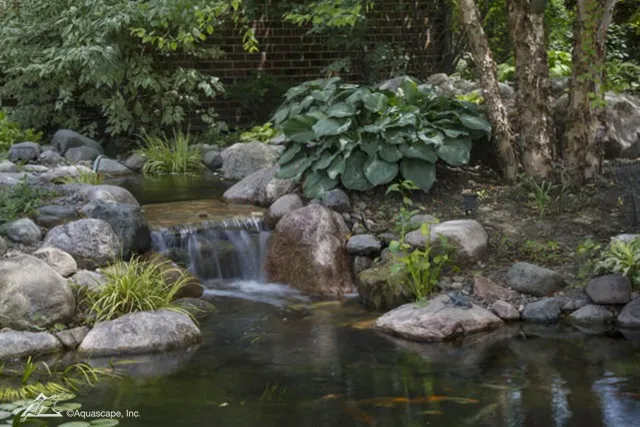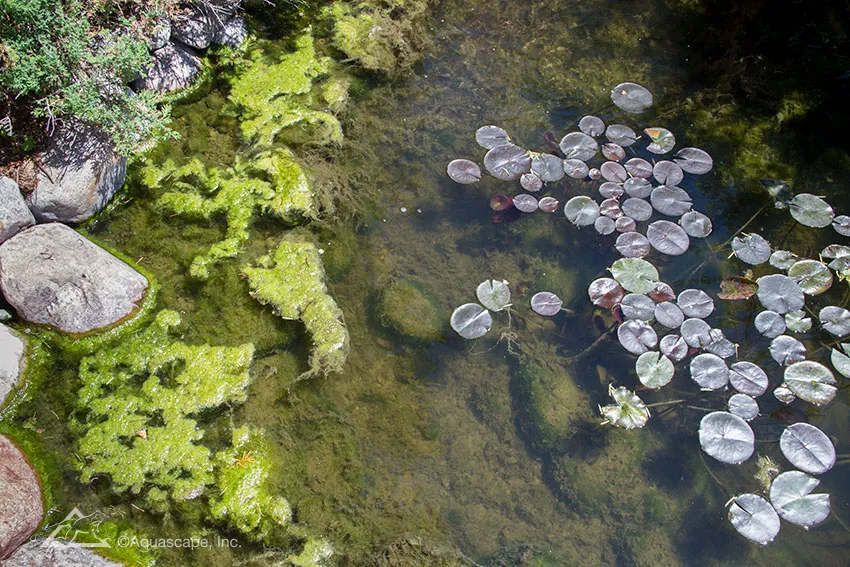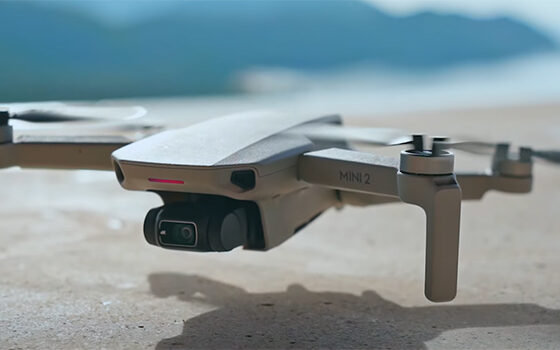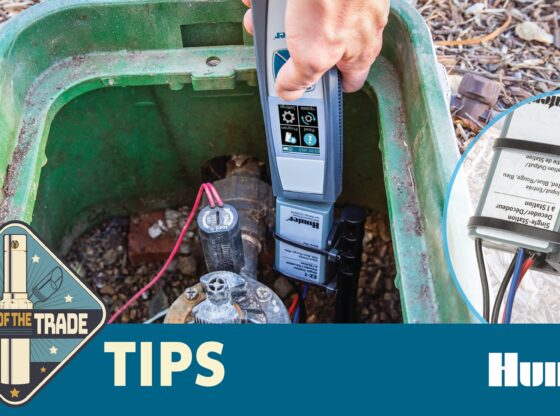Spring is here and it’s time to get a little pond maintenance. This is just another service you can offer your current clients or to get your foot in the door with new potential customers. Make home owners aware that these initial maintenance tasks can help prevent future problems from arising throughout the pond season.
1. Clean Out the Pond
Early Spring is the perfect time to clean out a pond. In some cases you may need to do a full clean out although not all ponds will require that. Conducting a rinse and picking up loose debris will suffice for many ponds. But, how can you tell? There are a couple of things that you can look for to help you decide. A for sure sign that the pond needs a full-clean out is if  there is a layer of “crud” at the bottom of the pond and the water is dark in color. On the other hand, if there is just a small amount of debris that you can stir up and capture with a net and the water looks clear, a little tidying up is all that is required. If you are doing a full-clean out, set aside a half to full day of work depending on the size of the pond and extent of build up.
there is a layer of “crud” at the bottom of the pond and the water is dark in color. On the other hand, if there is just a small amount of debris that you can stir up and capture with a net and the water looks clear, a little tidying up is all that is required. If you are doing a full-clean out, set aside a half to full day of work depending on the size of the pond and extent of build up.
The ideal time to perform a pond clean out is before the water temperature in the pond is above 55º F. If a clean-out is performed when the water is warmer, after bacteria colonies form, the balance of the ecosystem will again be thrown off and your pond will go through another “green phase” before the bacteria colonies re-establish themselves again.
Supplies for Getting Started
- A clean-out pump with approximately 25 ft. of discharge hose
- A high-pressure nozzle for your garden hose, or a power washer
- Garden shears for trimming plants
- A child’s swimming pool or a similar sized container to hold fish and any other critters you find during the clean-out
- A net or something similar to place over the fish container to keep them from jumping out
- Two five-gallon buckets to collect leaves and debris
- A fish net
- Aquascape Pond Detoxifier to remove chorine and chloramines prior to putting fish back
- Aquascape Cold Water Beneficial Bacteria
Drain the Pond / Pondless® Waterfall
- Place the clean-out pump in the deepest point of the pond (or in the Pondless® Waterfalls Snorkel™) in order to remove the water.
- Drain the water into the surrounding landscape. Be sure to relocate the pipe two or three times to allow the water to seep into the ground and not flood the yard.
- If you have fish, use some of this pond water to fill up the holding pool. The fish can be removed from the pond using a net once the water is low enough so you can easily catch them.
- Don’t keep the fish in the holding pool for more than several hours. Keep them in a shady spot with a net over the top of the pool to prevent them from jumping out.
Don’t Overdo the Cleaning
- Rinse the inside of the pond. You can also use a pressure washer to help remove debris from the rocks and gravel.
- Don’t try to scrub all of the algae away. Some algae on the rocks will prove beneficial in developing your ecosystem. For an average size pond (11′ x 16′) this should take around 15 minutes.
- Use the gentle stream from a garden hose to rinse the rocks and gravel. Start at the top and work your way down to the bottom. Periodically turn the clean-out pump on to remove the dirty water. You can discontinue the periodic pumping once the water rinsing down to the bottom begins to look clear. Remove the pump and begin filling the pond.
Cleaning the Filters
- Remove any debris from the bottom of the skimmer and Snorkel™ Vault. This can be done by hand or by using the clean out pump.
- Remove the media nets and filter pads from the BioFalls® Filter. (Not included with the Pondless® Waterfall). If you have the optional drain kit attached to your Signature Series™ BioFalls® Filter, you can open up the valve and rinse the media and filters. Once the filters have been removed rinse them free of accumulated debris.
- The filter media and mats can be put back into place and the waterfalls pump can be reattached in the skimmer or Snorkel™ Vault.
 Putting Your Fish Back into their Clean Home
Putting Your Fish Back into their Clean Home
- If you’re on city water, it’s imperative that you add a Aquascape Pond Detoxifier to the water so it is safe for fish.
- Dip a five-gallon bucket, or similar sized container, in the holding tank and fill it with water.
- After you’ve caught a fish, place it in the bucket and set the buckets in the clean water.
- After about 15 minutes, periodically begin splashing some pond water into the bucket.
- By now, the temperature of the pond and the bucket water should be close to the same. You are ready to spill the fish into their spring-cleaned home.
2. Check the Pump
Make sure that it’s clean and functioning correctly.The pump is the heart of your water feature and needs to be in tip-top shape at all times.
3. Fix Any Leaks
Constantly adding tap water to make up for a loss of pond water means the constant addition of nutrients which will eventually promote algae growth.
4. Remove Debris from the Past Season
This is crucial because an excess of decaying debris will add to the nutrient levels and the algae in the pond.
5. Add Beneficial Bacteria Treatments
Add Beneficial Bacteria Treatments and continue to do so regularly throughout the season. It competes with the algae for available nutrients, starving the algae of its food source. Use Aquascape’s Automatic Dosing System to avoid the hassle of consistently adding and choosing the correct water treatments for your water feature.
 6. Add Plants to Control Algae
6. Add Plants to Control Algae
Since plants directly compete with algae for nutrients, they are the most important addition to the pond. Using a wide variety of plants will not only add to the natural look of the pond, but will reduce algae growth as well.
7. Don’t Over Feed Fish
Fish food that is not eaten will add more nutrients to the pond, helping feed the algae. Inform customers about the importance of proper fish feeding. The following are some steps to take.
Be Consistent
The key is to be consistent, try to feed at the same time each day, and from the same spot. After a few weeks in the pond, they will be conditioned to the homeowner feeding them and the response will be considerably different. After a complete season, the homeowner will have them eating out of their hand.
Serve High Quality Food
Everything that is put into the pond is going to be broken down and removed by the filter. Serving fish high quality food, will help not only fish but the water quality.
Variety is the Spice of Life
Inform homeowners that they can offer their fish treats just like any other animal. Although, over feeding treats is also harmful to the pond because what ever the fish don’t eat will be left in the pond.
The Five Minute Rule
A good rule of thumb is to only offer what your fish can eat in four or five minutes. The decision to feed fish is up to the homeowner, but it is good to inform them of their options. Many pond owners never throw a single piece of food into their pond. Ponds produce food for fish to eat and also help create a balance between plants and fish. Planting plants inthe pond will give fish more substance.
Choosing the Best Food
Studies have been done comparing the digestion of protein from various sources in fish, and found that fish proteins were the best digested and assimilated by fish. Fish eat fish.
Fish are adapted to the consumption of others in their food chain, so fish proteins are the best for fish. When looking at a bag of food and the first ingredient is wheat, stay away from it! Wheat protein is not equal to fish protein. Inform the homeowner of the importance of purchasing fish food that lists aquaculture proteins as the first ingredient in a decent diet for your koi and goldfish.
Offering cleaning and maintenance as a service for homeowners may get you in the door to a potential long term customer. This is a great start up service. Although details such as feeding fish may not be your responsibility, you want to be prepared to answer any of the homeowner’s questions. Knowing details such as these will make you seem more knowledgeable and you could become their “go-to” guy for everything pond related! For any questions about ponds or water features contact your knowledgeable WCC staff near you. Information from Aquascape.












